
 Japanese
Japanese
As mentioned above, the operation of traditional Tatara ironmaking was obsoleted at an early stage of Showa era by the introduction of modern efficient steelmaking imported from Europe. After the world war II, it was restored by the support of The Iron and Steel Institute of Japan in the former Yoshida village (currently Yoshida-cho, Un-nan city), and currently it was operated only three times in winter by the directing of The Japanese Sword Museum.
Besides, many researchers, groups, and interested persons, etc. try to perform small-scaled Tatara ironmaking. In our laboratory, we employ a modified small-scaled Tatara ironmaking proposed by Prof. Kazuhiro Nagata (Professor Emeritus, Tokyo Institute of Technology, Japan).
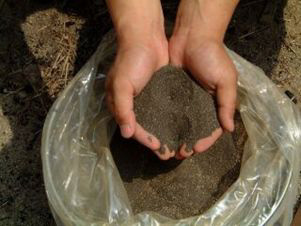 Iron sand
Iron sand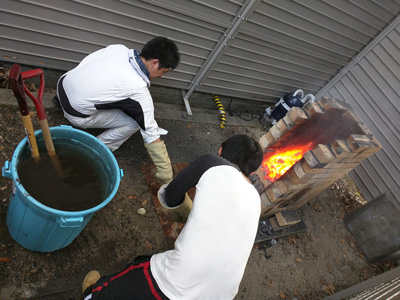 Operational scene
Operational scene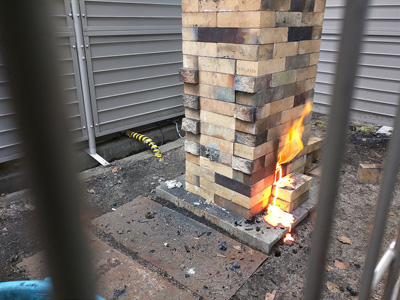 Noro (slag) discharging
Noro (slag) discharging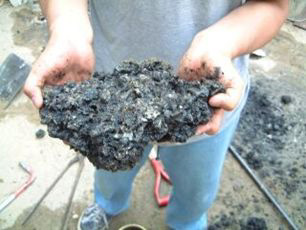 Obtained Kera (iron product)
Obtained Kera (iron product)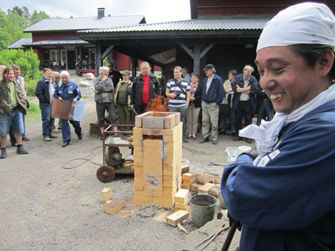 An operation in Finland
An operation in Finland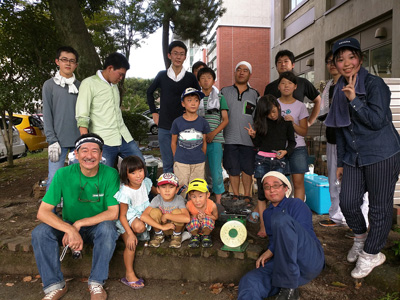 Collaboration with high school students
Collaboration with high school students Open campus
Open campus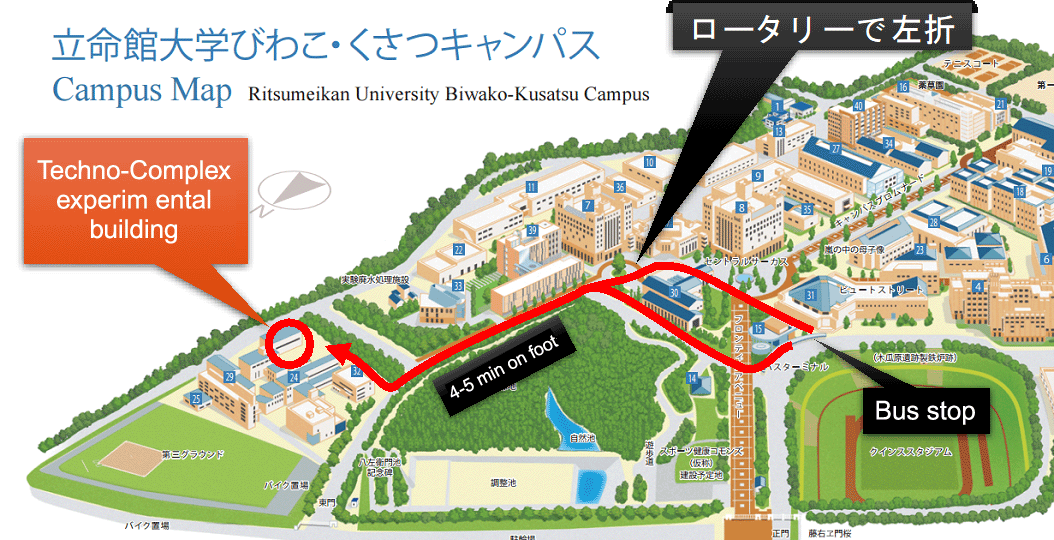
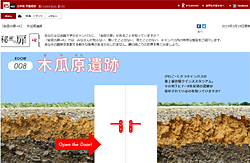
Interestingly, we, BKC campus, Ritsumeikan University, preserves an ancient site of Tatara ironmaking named Bokewara. Through our operation, we would like to offer information on Tatara ironmaking in Kansai area, Japan.